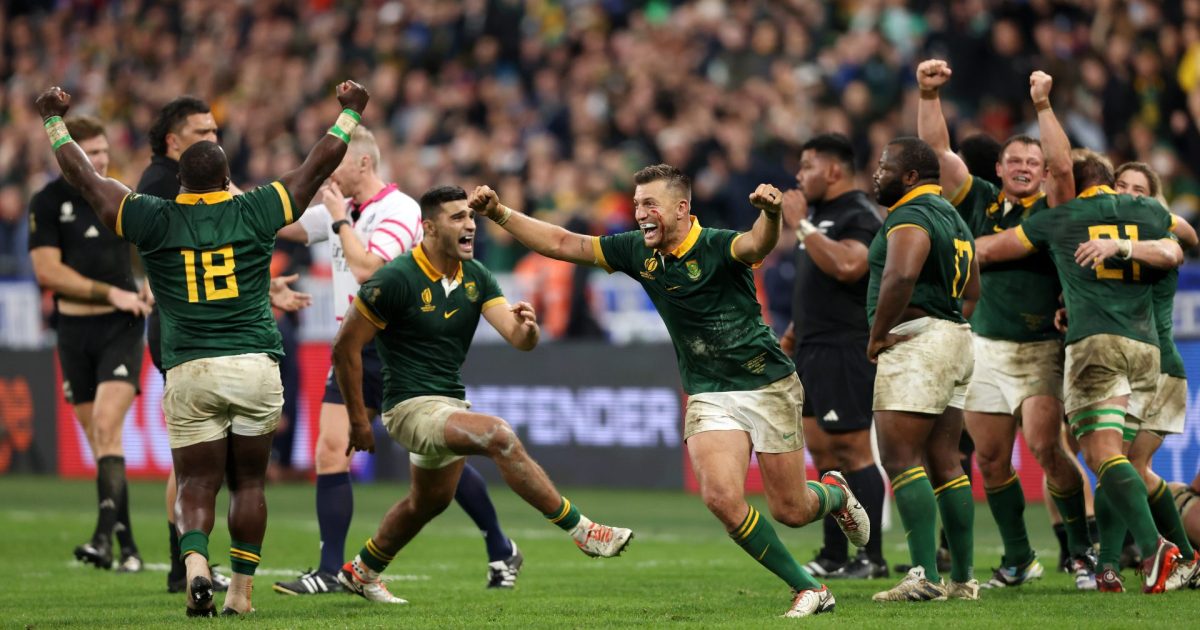Raeburn Shield
-
Elliott is a good lad, have had a bit of contact with him and appreciate the Rugby Direct shout out.
Making good progress on worming my way into the subconscious of international rugby fans.
Just shy of 500,000 views on TikTok in the last 28 days too which is helpful 😊
-
-
I was pleased to get in the Herald on the day of the Semi Final.
Hopefully just building a familiarity for people feeling it has always been a thing 😁
-
Managed to bag another reasonably major press piece. This time one owned by World Rugby
-
Anybody have a NZ Herald Subscription?
Managed to get Alice Soper covering the shields in her column which I am pretty stoked about
-
Instagram stuff is really great
Keep on truckin'
-
@Davesofthunder said in Raeburn Shield:
Anybody have a NZ Herald Subscription?
Managed to get Alice Soper covering the shields in her column which I am pretty stoked about
Assume you want the text?
Utrecht Shield is a piece of rugby history many are unaware of, let me explain - Alice Soper
Canada, seen here playing the Black Ferns, have a chance to lift the Utrecht Shield for the first time when they face Australia in the Pacific Four Series this weekend. Photo / Mike Lee
There are two lesser-known trophies in international rugby which offer a special insight into our game’s history. Not unlike New Zealand’s own Ranfurly Shield, the Raeburn and Utrecht Shields are lineal titles.
The winners hold them as the result of winning a match over the previous holder, tracing all the way back to the first recorded instance of international rugby. The Raeburn Shield takes its name from the location of the first men’s match played between Scotland and England in 1871. Whereas the Utrecht Shield is named for the Dutch city that hosted the first women’s international between the Netherlands and France in 1982.
Already, their naming highlights the divergence of early rugby history between the men’s and women’s game. England and Scotland would appear at the top of the list of common answers were you to ask any pub quiz to name the participants of the first men’s international rugby game. Be honest, how many of you would have named the Netherlands as the team to line up against France in the first women’s match?
That France was there is less surprising given their current position in the women’s world rankings as well as their position of influence on women’s sports history. Alice Milliat was the woman behind the Women’s World Games, the tournament which helped advance the case for broader inclusion of women in the Olympic Games. She was also the president of the Federation Francaise Sportive Feminine at the time that barette was taking off in the 1920s.
Barrette was a variation of rugby union, with 12 players on the field, and was perhaps ahead of its time with a requirement for players to tackle around the hips. It was designed for women, not just to take account of the views of women’s sporting ability at the time but also the barriers they would come up against.
As it was technically a different sport, the French Rugby Union’s attempts to ban women from playing barette universally failed. Meanwhile, Federation Francaise Sportive Feminine was there to champion this women’s league to great success, culminating in it featuring as the regular curtain-raiser at Stade Jean-Bouin in 1928.
World War II saw the end of this league before French women’s rugby emerged again 20 years later. Women had been playing in domestic competitions for 10 years before their fateful match against the Netherlands in 1982. The Netherlands had a more progressive modern history with the women’s game. Sending a delegation to France to learn from their example, the idea of the women’s test match was born. It was planned as part of the Dutch Rugby Union’s 50th anniversary celebrations. The game was won one try to nil by the French and the Utrecht Shield found its first winner.
The Netherlands got their revenge four years later, becoming the second nation to hold the title. Since then it has gone on to be held by Great Britain before they split and England, Wales and Ireland all got a turn. All up, 10 countries have held the title. England has defended the Utrecht Shield the most times which speaks to their historically heavier test schedule. New Zealand is next in line and despite holding the shield for much longer periods in their trophy cabinet, they have only defended it nearly half as many times.
Last year, during the WXV, Australia became Utrecht Shield holders for the first time. New Zealand had handed it over to France in their first-round loss. So Australia then took it home for the summer after a famous win over France in Dunedin. This weekend, they play Canada in the Pacific Four Series and it will be their first shield defence. If they lose, Canada will lift the Utrecht Shield for the first time, writing yet another chapter in our game’s unique history.
-
@MiketheSnow Thanks mate
Have been pumping out content on Tiktok for a while which has done well and realised I could pay for an automation tool to take the content and post it on other channels.
Been super helpful to extend how much I can do as time is very limited 😀
-
-
i saw the post on the socials where people are messaging giving him abuse for driving the idea.....i just dont get the things that people choose to hate
-
@Kiwiwomble said in Raeburn Shield:
i saw the post on the socials where people are messaging giving him abuse for driving the idea.....i just dont get the things that people choose to hate
wow. That is the most innocuous thing to go against. Wild.
Socials are antisocial.

